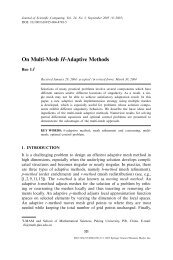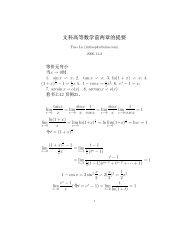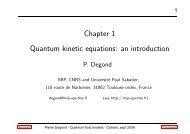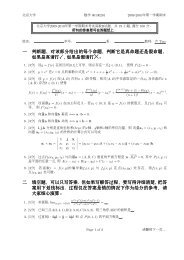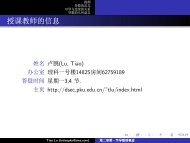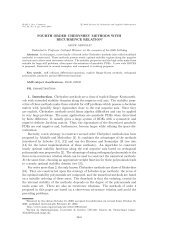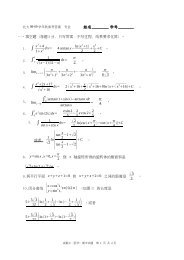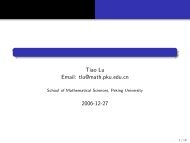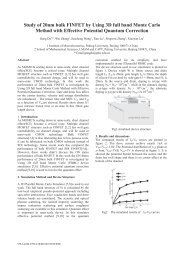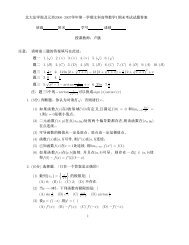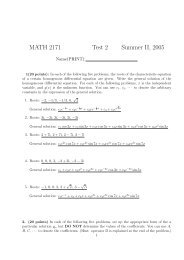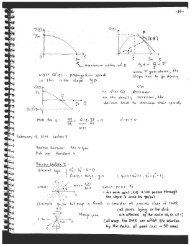Abstract
Abstract
Abstract
Create successful ePaper yourself
Turn your PDF publications into a flip-book with our unique Google optimized e-Paper software.
APPENDIX D. GMRES AND ARNOLDI ITERATIVE METHODS 151<br />
matrix-free which means the matrix D and its inverse D −1 are not computed or stored.<br />
Therefore, iterative methods can get a good approximate solution to these subprob-<br />
lems for less computer memory and time than direct methods that must store and<br />
calculate the matrix D and its inverse D −1 . Both of the iterative methods considered<br />
find approximate solutions in a Krylov subspace. This description of these methods<br />
are based on [19] (linear solver) and [25] (eigensolver). Note that this appendix does<br />
not give an exhaustive look at these methods, and one should read the mentioned<br />
references if one wants a more thorough explanation of the methods.<br />
We will first consider the linear solver GMRES for the Newton-step linear sub-<br />
problems of the form<br />
Da = b,<br />
where D ∈ R M×M is the preconditioned Jacobian matrix. For solving this linear<br />
system, one starts with an initial iterate a 0 ∈ R M and computes the initial residual<br />
r 0 = b − Da 0 . Then the j-dimensional Krylov subspace, denoted by Kj, used in<br />
solving the linear system is defined as<br />
Kj =span{r 0 ,Dr 0 ,D 2 r 0 ,...,D j−1 r 0 }.<br />
At the j-th GMRES iteration, GMRES finds the linear least-squares solution of the<br />
given linear subproblem over the j-th dimensional Krylov subspace Kj. Leta j ∈ Kj




